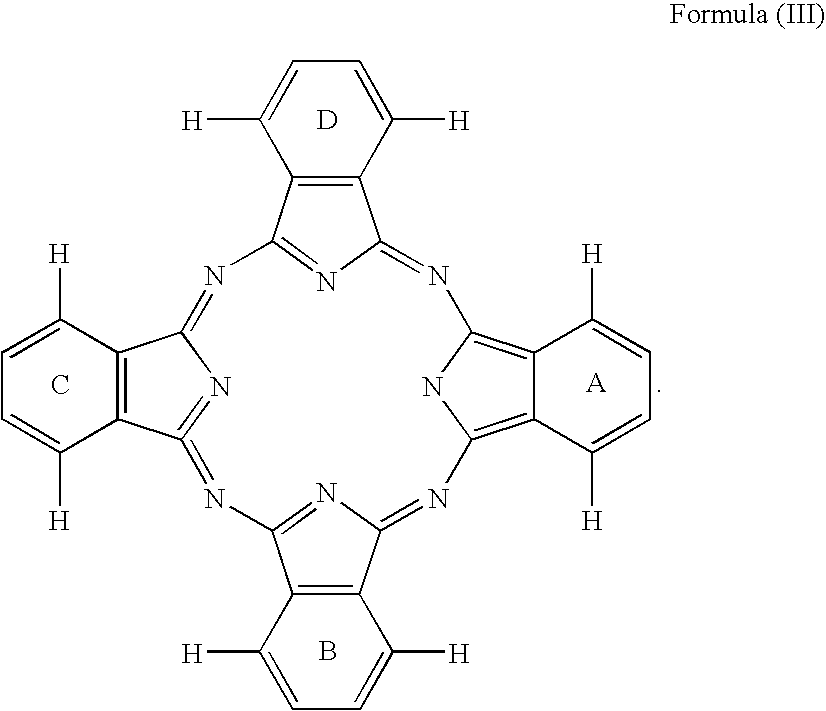Dye mixture and ink containing the same, inkjet recording method and image forming method
a technology of dye mixture and ink, which is applied in the field of dye mixture, can solve the problems of dyes that have not been known to meet all of these performance requirements, light fastness, and dyes that have not been shown to be transparent, and achieve the effect of improving the ozone gas resistance of the color image material
- Summary
- Abstract
- Description
- Claims
- Application Information
AI Technical Summary
Benefits of technology
Problems solved by technology
Method used
Image
Examples
example 1
Preparation of Ink Solution A
[0312]In a mixture of 4.22 g of High Boiling Point Organic Solvent (s-2) shown below, 5.63 g of High Boiling Point Organic Solvent (s-11) shown below and 50 ml of ethyl acetate were dissolved 5.3 g of phthalocyanine compound (Compound 101 described hereinbefore) and 7.04 g of sodium dioctylsulfosuccinate at 70° C. To the solution was added 500 ml of deionized water under stirring with a magnetic stirrer to prepare a coarse particle dispersion of oil droplet-in-water type. The coarse particle dispersion was passed through Microfluidizer (produced by Microfluidex Inc.) at a pressure, of 60 MPa (600 bar) 5 times to prepare an emulsion of fine particles. The emulsion was subjected to removal of solvent by a rotary evaporator until odor of the ethyl acetate went out. To the resulting fine emulsion of hydrophobic dye were added 140 g of diethylene glycol, 50 g of glycerin, 7 g of Surfynol 465 (produced by Air Products & Chemicals, Inc.) and 900 ml of deionized...
example 2
[0354]Using each of the same inks as prepared in Example 1, an image was printed on inkjet paper (Photo Glossy Paper EX, produced by Fuji Photo Film Co., Ltd.) by the inkjet printer as described in Example 1, and evaluated in the same manner as in Example 1. Thus, the same results as in Example 1 were obtained.
example 3
[0355]Each of the same inks as prepared in Example 1 was fed in a cartridge of inkjet printer (BJ-F850, produced by Canon Inc.), and an image was printed on inkjet paper (Glossy Photo Paper GP-301, produced by Canon Inc.) by the inkjet printer and evaluated in the same manner as in Example 1. Thus, the same results as in Example 1 were obtained.
PUM
| Property | Measurement | Unit |
|---|---|---|
| boiling point | aaaaa | aaaaa |
| boiling point | aaaaa | aaaaa |
| temperature | aaaaa | aaaaa |
Abstract
Description
Claims
Application Information
 Login to View More
Login to View More - R&D
- Intellectual Property
- Life Sciences
- Materials
- Tech Scout
- Unparalleled Data Quality
- Higher Quality Content
- 60% Fewer Hallucinations
Browse by: Latest US Patents, China's latest patents, Technical Efficacy Thesaurus, Application Domain, Technology Topic, Popular Technical Reports.
© 2025 PatSnap. All rights reserved.Legal|Privacy policy|Modern Slavery Act Transparency Statement|Sitemap|About US| Contact US: help@patsnap.com



